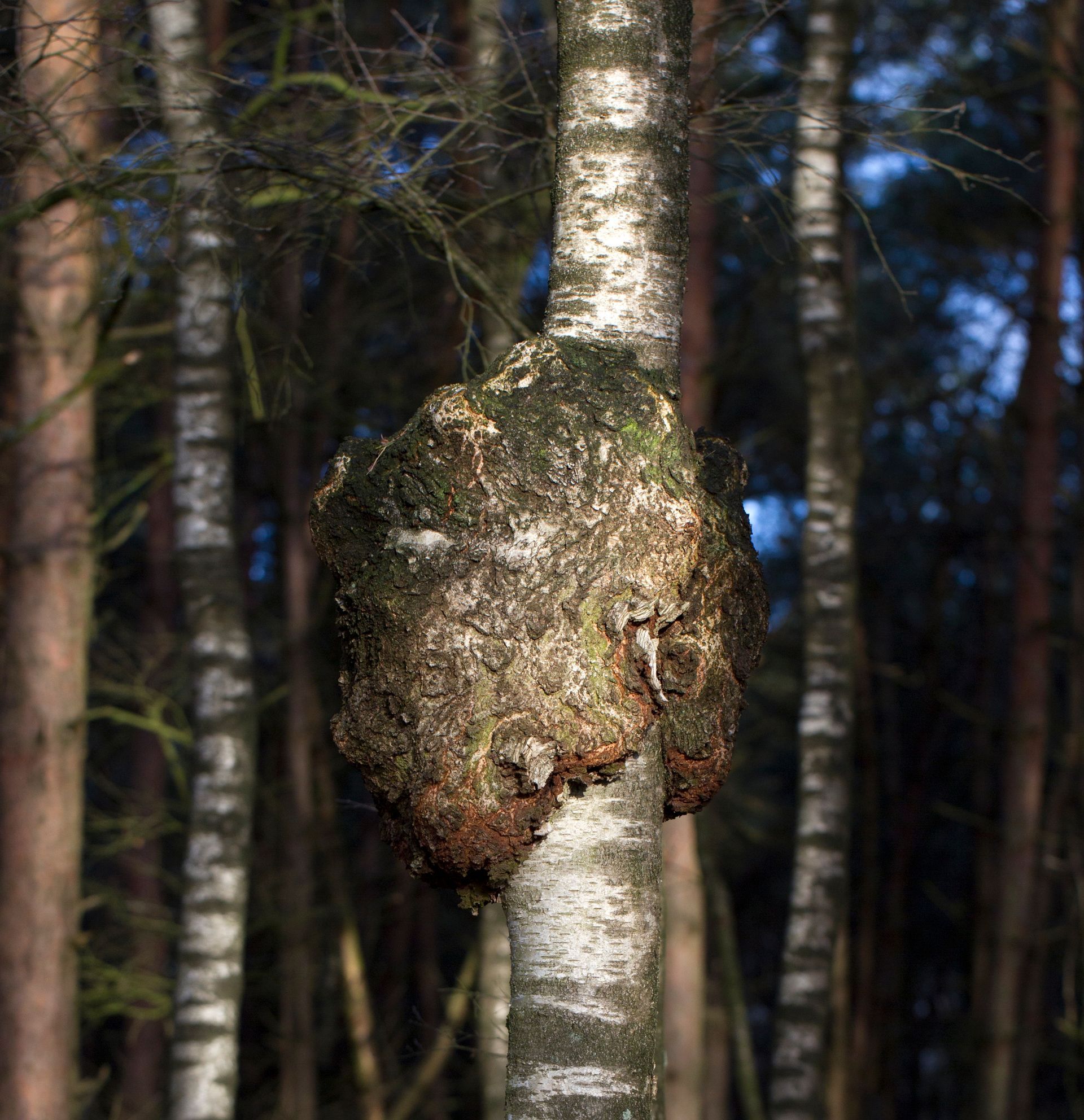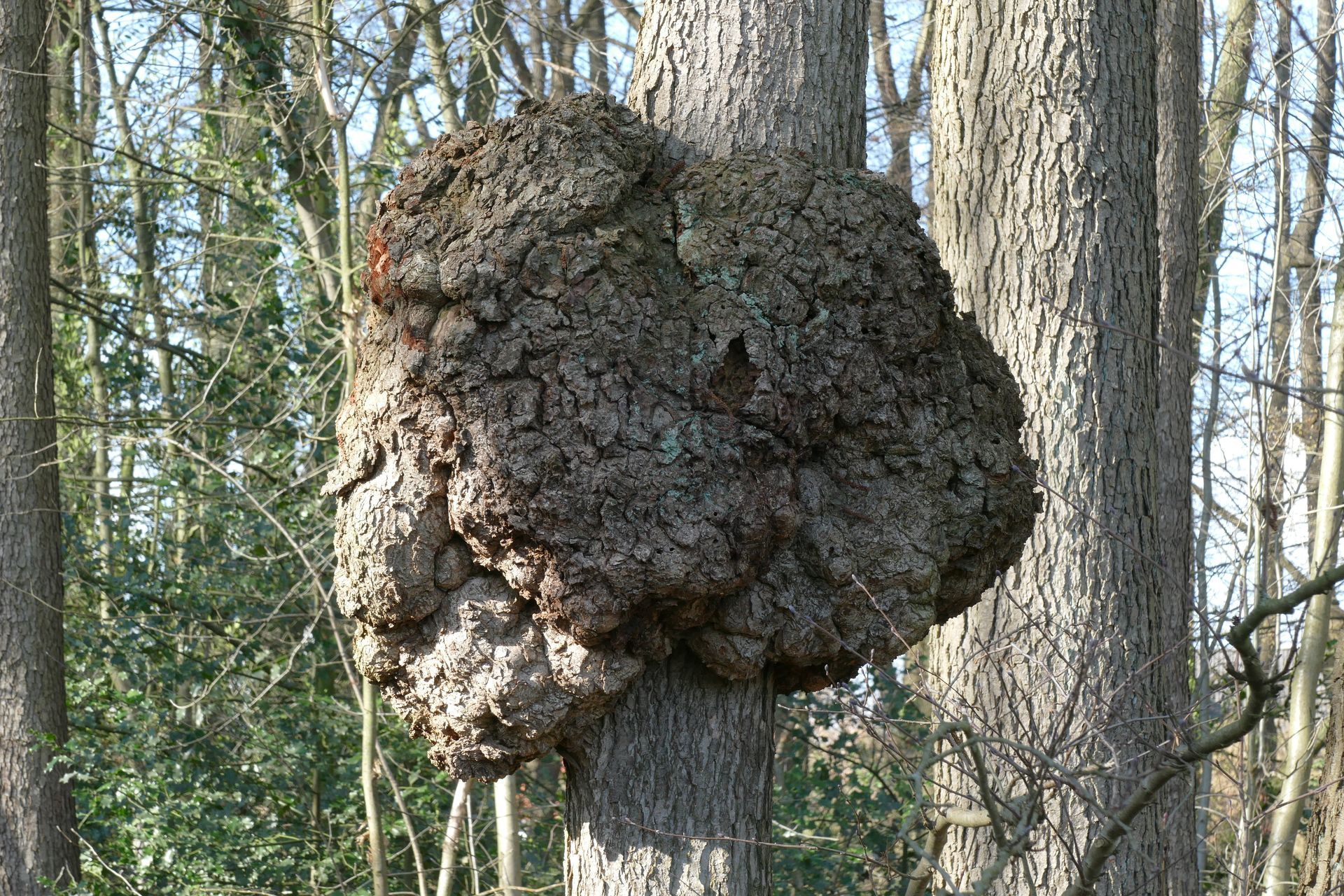Tree Canker Disease And Treatment

Tree canker disease affects the trunk, branches, and bark of trees. It is caused by a fungal or bacterial pathogen, which enters the tree through natural openings or poor pruning cuts. These may be stomata, pruning wounds, or leaf scars.
Whether you grow these trees in your backyard or have a garden, you should know about tree canker treatment. Below, we discuss how to keep trees healthy and treat cankers.
Table of Contents
Some insects may also damage plants by feeding on them. Pathogens can also enter healthy trees through these wounds. Tree canker disease affects many types of trees. Some of them include:
- Ornamental
- Shade
- Fruit Trees
What Are Tree Cankers?
A tree canker is a sunken area of diseased or dead tissue in a tree. Depending on the severity of the pathogen infection, it can vary in size and shape.
These pathogens spread around the tree's branches and trunks. They cause damage to the underlying tissue and the bark.
On the inside, they also disrupt the vascular system of the tree. That limits the tree's ability to transport water and nutrients.
Such pathogens enter a tree and often trigger the plant's immune response. The tree produces enzymes to fight these pathogens. But some pathogens may be stronger than the tree's immune response.
Some common cankers are:
- Cytospora Canker: Found on pine, willows, poplars, and spruce
- Nectria Canker: Found on maple, oak, and honey locust
- Phomopsis Canker: Found on arborvitae, Russian olive, and juniper
Cankers can be slightly discolored or may manifest as brown-red lesions. Besides branches and trunks, they also form on smaller twigs.
A branch with a canker often splits to divide the healthy and diseased tissue. In some cases, moisture or sap may ooze out. The inner bark usually has a foul odor and turns black.
Canker Disease In Trees
The pathogen that causes canker development causes canker diseases. Some symptoms of tree canker disease include the following:
- Sunken or discolored areas of the bark
- Wilting or yellowing leaves
- Dead or dying branches
- Cankers on branches or trunks
- Gumming or oozing of sap
- Cracked or damaged bark
- Reduced growth and vigor
Stem or branch dieback and canker diseases are most common in trees in stress conditions. For instance, a tree may be under stress in winter injury, drought, or transplant shock. Such trees become susceptible to fungal attacks since their immune responses are slow.
Some stress agents include:
- Prolonged high or low-temperature exposure
- Flooding
- Hail
- High winds
- Nutritional imbalance
- Mechanical injuries (pruning tools, lawn mower, etc.)
- Root rot
- Improper plating
- Summer or winter sunscald
- Insects
Fungal cankers have fruiting bodies that look like pinheads. These black, red, or orange bumps appear raised on the tree's bark.
Fruiting bodies help spread fungal spores through reproduction. If you see fruiting bodies on a tree, the fungus will likely affect nearby trees soon.

How To Treat Tree Cankers Disease
Please contact your local arborist before applying any paints, adhesives, or wraps to your trees. If you do not know what you are doing you could damage or injure the tree further.
A trunk canker often develops due to pruning cuts and injuries. Be careful when pruning flowering trees to prevent natural entry points for fungi.
- Prune flowering trees in their blooming period. They heal fastest during this time, exposing the wound.
- Remove lead and wilted limbs under the area infected by canker disease.
- Use a tree pruning sealer to treat all pruning cuts.
- Disinfect your pruning equipment with a mixture of one-part bleach and four parts water. Clean your tools after every cut.
Prevent Weather Damage
You cannot always do much to prevent canker diseases caused by weather-related stress.
Some people have had success brushing the bark with latex paint. They dilute white latex paint with water and brush the bark to reduce the impact of temperature fluctuations.
You can also cover trees with thin sheets of cloth or burlap to protect them from hot and cold winds. Remove grass and weeds from the tree's base. Doing so helps improve circulation and prevents fungal spread.
Another approach is anti-desiccant treatment. Before winter comes, spray the tree with an anti-desiccant solution. It protects against drying winds and cold temperatures to prevent trunk canker infections.
Fungicides
Copper fungicides help in tree cankers treatment in plums and cherries. Look for a fungicide with copper oxychloride, such as Orthocide. For best results, apply the fungicide twice a year.
The most effective time to use copper fungicides is in mid-October and mid-September. Copper fungicides can also keep plants safe from beech bark disease and chestnut blight.
Professional Help
When a tree canker develops, the tree sometimes seals the area by forming a callus. Do not cut into these cankers because a cut may renew fungal activity. Instead, hire a certified arborist for tree cankers treatment.
Sweet New Earth's Final Word
Tree diseases, such as canker disease, are often caused by fungal activity. As the pathogen grows, it infects all parts of the tree, causing serious damage.
Most cankers form on the branches but can also infect trunks and twigs. Besides pathogens, nutritional imbalances and stress can also cause cankers. Good pruning technique, proper nutrition, and preventive measures are the best treatments for a tree canker.
FAQs

Christina Hernandez
Christina has done most of her research on environmental science but recently has changed her focus towards sustainable forestry. She has a passion for the outdoors and wants to spread that passion to the world.
Join our community!
Join to receive guides, insights, and the latest gardening deals!
